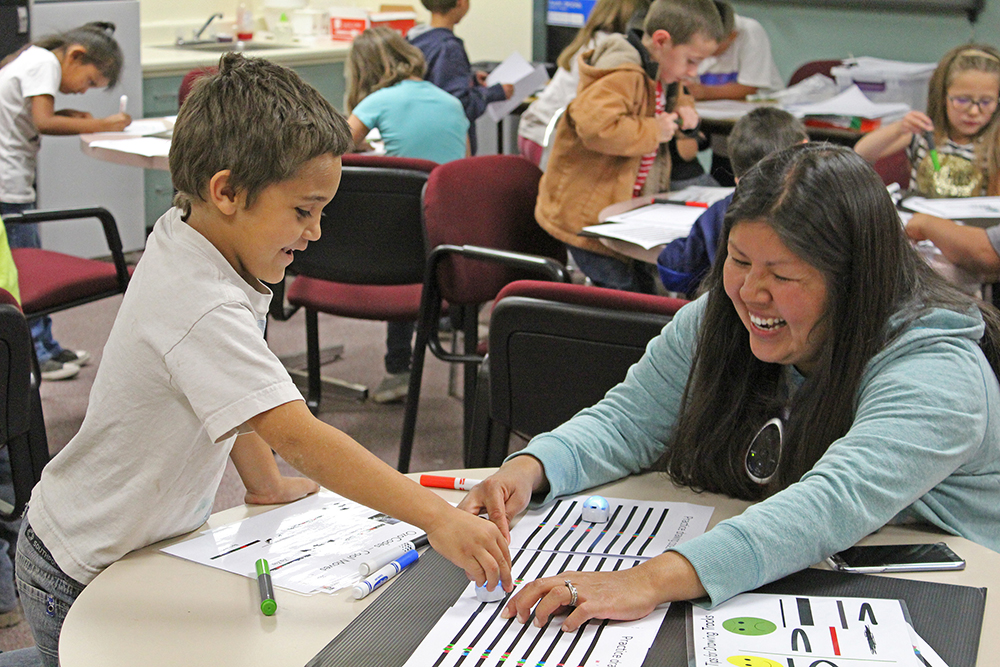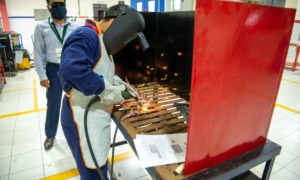
Arizona Science Center
A STEM Extravaganza led by the Arizona Science Center provided both professional development for teachers and hands-on activities for kids at Washington Elementary in Holbrook, Arizona. The science center recently received a $1 million grant to continue outreach to rural school districts in Arizona.
A science center in Phoenix is bringing training to educators and after-school clubs in rural areas of the state in an effort to make good STEM instruction equally available in those areas.
The Arizona Science Center’s Rural Communities Expansion Project will reach 15 mostly rural school districts this year.
“There’s lots of talk about the need for a more high-tech workforce,” said Rob Robertson, senior vice president of learning partnerships for the science center. Students need to know how to problem solve, he said. And while K-8 schools customarily teach science and math, they aren’t strong in teaching about technology and engineering.
The center emphasizes project-based learning and integration of STEM (science, technology, engineering and math) into other subjects, he said.
“Project-based learning is where we help them build capacity for problem solving,” Robertson said. Teachers can show kids how to try something over and over and how to improve upon their design, he said.
“This really goes contrary to the traditional model on instruction,” he said.
Teachers are often not aware of ways to integrate STEM in their classrooms and are used to teaching subjects separately, Robertson said. They also don’t feel qualified to include engineering instruction — which can seem like a foreign subject to many — at the elementary level, he said.
The center sends trainers about six times a year to the rural districts.
They find that as teachers increase their STEM teaching skills, they expand into the after-school space.
“They want to do it in an after-school club,” Robertson said. “They don’t see the space in the day to do projects.” Roughly one-third of the districts have requested assistance with after-school clubs, he said.
The center provides a one-day training for them during the summer or during a school break.
“We take them through a series of activities they can do with the kids [after-school], such as an engineering design challenge,” Robertson said. “They go away with a big bin of materials” that furnishes activities for nine weeks.
The Rural Communities Expansion Project began in 2013 with a grant from the APS Foundation, which has now provided an additional $1 million for the next five years.





























